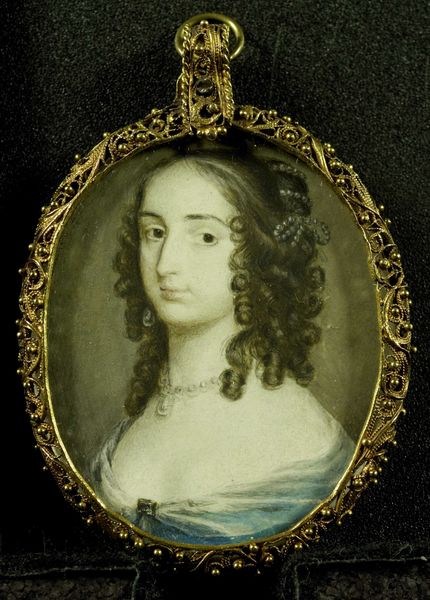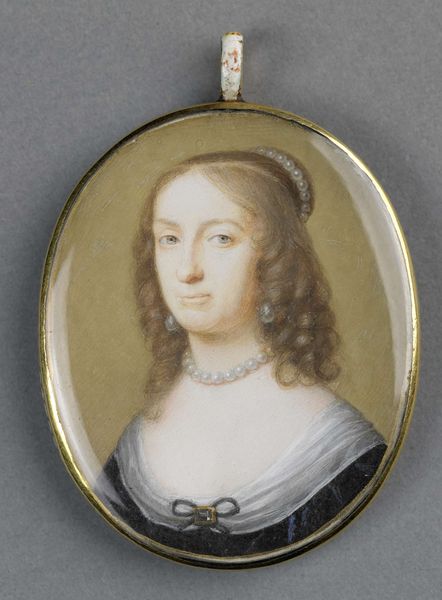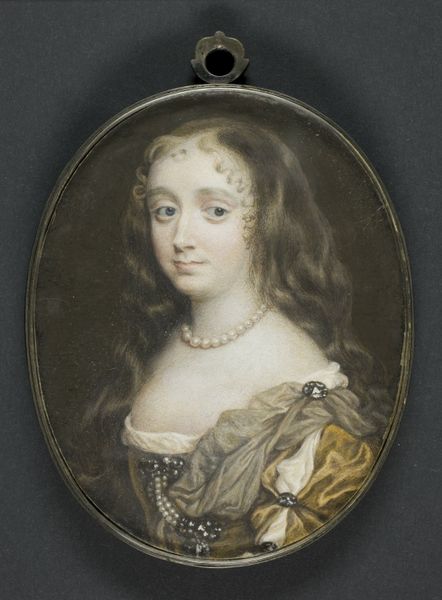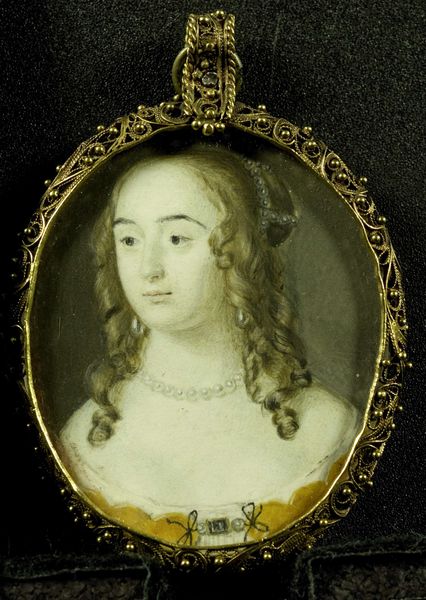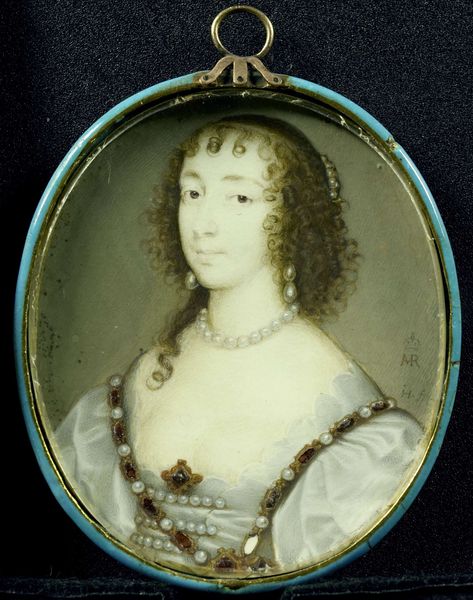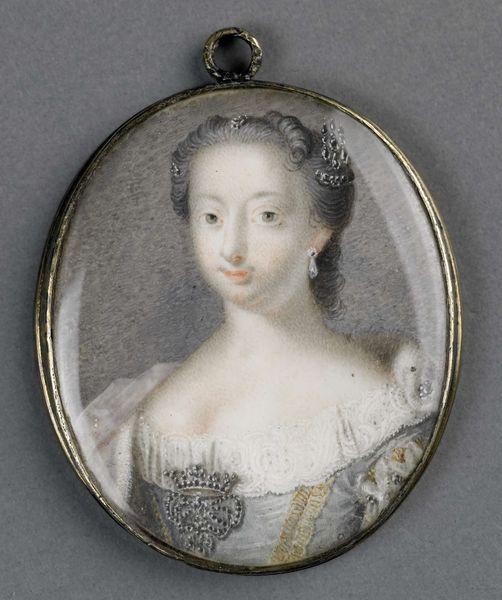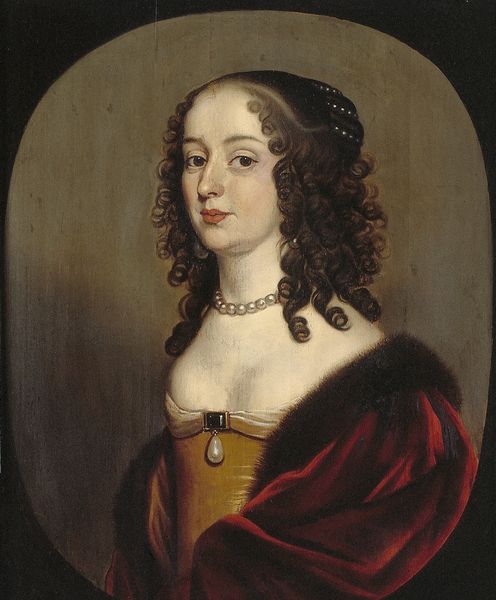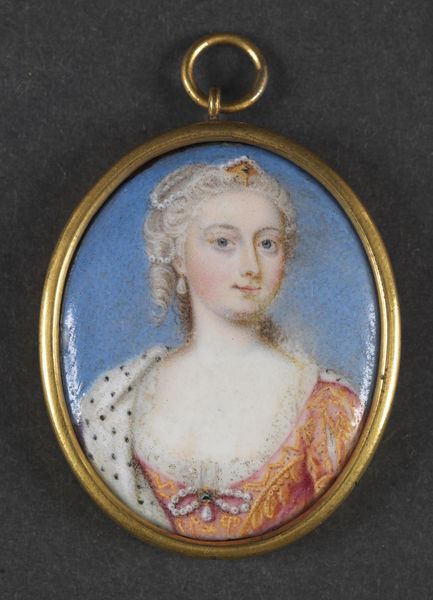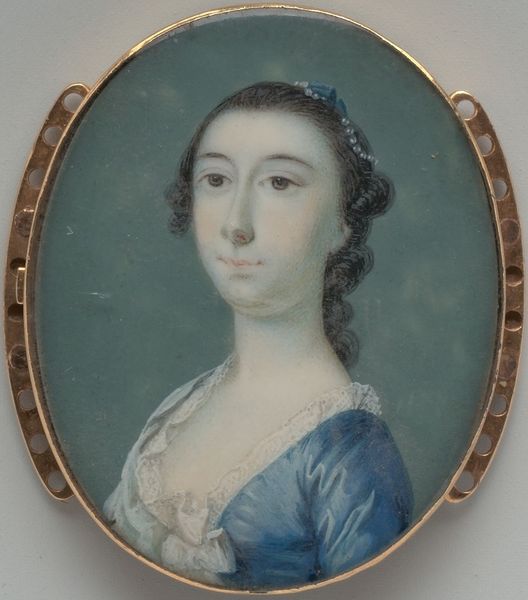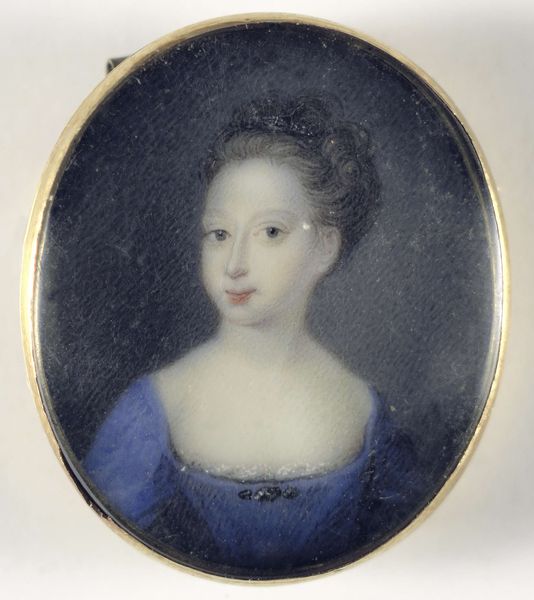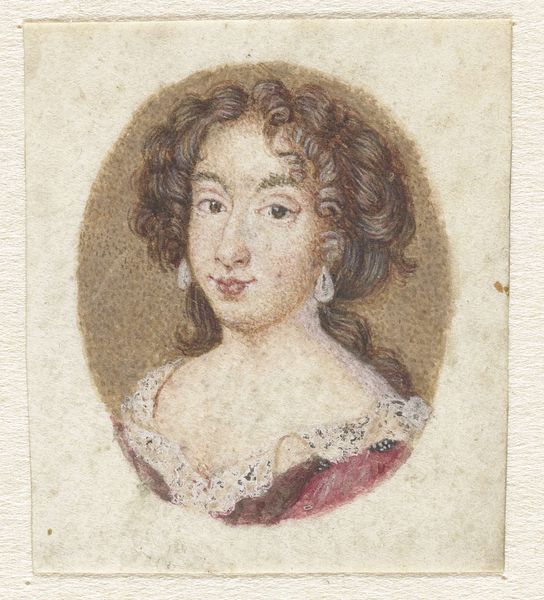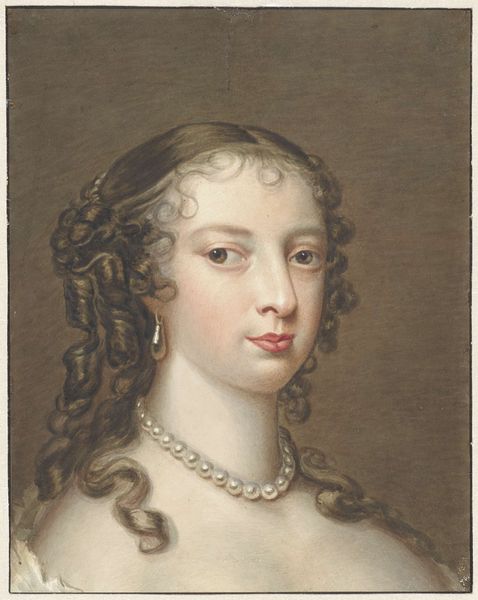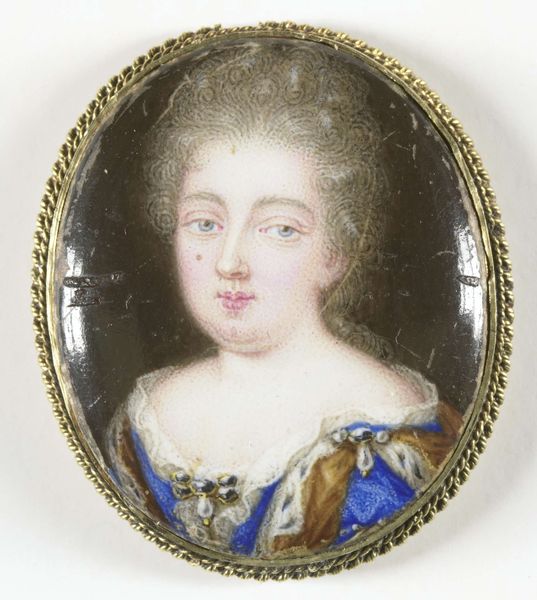
painting, watercolor
#
portrait
#
baroque
#
painting
#
watercolor
#
intimism
#
watercolour illustration
#
miniature
Dimensions: height 6.8 cm, width 5.5 cm, height 8 cm, width 5.7 cm, depth 0.5 cm
Copyright: Rijks Museum: Open Domain
Editor: This is Samuel Cooper’s "Portret van een vrouw," made in 1643 using watercolor. The details, particularly the woman's curled hair, feel so precise for such a small-scale painting! What draws your attention most when you look at this piece? Curator: I find myself considering the watercolor technique itself, the build-up of transparent washes. What sort of labor was involved in creating this small likeness? It wasn't simply about artistic skill, but about the painstaking application of pigment, perhaps involving apprentices in the preparation of materials. How does this connect with contemporary artisanal practices? Editor: So you’re thinking about the artist's process. Do you think the miniature size affected how it was made? Curator: Absolutely. Miniatures like this were luxury items. Consider the cost of the materials: high-quality pigments, perhaps imported, the vellum support itself, even the gold frame. The pearl jewelry worn by the sitter also speak to material wealth and the politics of status that portraits reinforced. How did Cooper acquire his knowledge of such craft? Editor: It's interesting to consider the social context in relation to materials! Thinking about the pearls...were these portraits status symbols due to the physical materials involved? Curator: Precisely. And remember, it's not just about owning a beautiful image; it's about displaying access to luxury, celebrating emerging Bourgeoisie trends via consumption. Where and how would such a portrait have been viewed? The materiality extends beyond the studio and into the spaces of display, possession and social interaction. Editor: That connection between art, craft and the portrayal of wealth gives a whole new perspective! It encourages me to look more closely at how the social life affects the making of any artwork. Curator: Precisely! Thinking of Cooper's work this way invites conversations about economic networks, labor, and consumption.
Comments
No comments
Be the first to comment and join the conversation on the ultimate creative platform.
